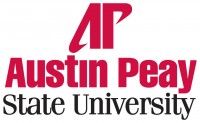 Clarksville, TN – On a stormy Monday afternoon, while tornado sirens blared across the Austin Peay State University campus, Mike Wilson, manager of the school’s Geographic Information Systems Center, decided to talk about natural disasters.
Clarksville, TN – On a stormy Monday afternoon, while tornado sirens blared across the Austin Peay State University campus, Mike Wilson, manager of the school’s Geographic Information Systems Center, decided to talk about natural disasters.
“Suppose a tornado rips through here,” he said, knocking on his wood desk to ward off the suggestion. “If that happens, local officials will need to do a preliminary damage assessment. That’ll go to the state, and the governor will make a decision on whether to call in FEMA for a natural disaster. This app speeds that up.”
Wilson motioned to his Android mobile phone. A year ago, his office, in conjunction with the Oak Ridge National Laboratory, developed an innovative new cell phone application known as the Disaster Mitigation and Recovery Kit (DMARK). The application allows emergency responders to document immediately any damage they come across following a disaster.
“Right now, damage assessment is done all on paper and pencil,” Wilson said last year when the prototype was first unveiled. “With the paper forms, they have to be collected, somebody has to transcribe them, somebody has to compile them and then submit it to the state. By collecting damage assessments via mobile phone, you can submit it quicker. And because it’s tied to a GPS point, you can put it on a map.”
The new cell phone application drastically cuts down on the time it takes to gather this information, but it wasn’t perfect. Employees with the GIS Center field-tested the application after last May’s flood, and they came up with several ideas on how to upgrade the program. The only problem was, they needed more money to continue their work.
Those funds thankfully arrived last month when the Department of Homeland Security awarded the APSU GIS Center and Oak Ridge a $400,000 Southeast Region Research Initiative grant, allowing Wilson and his team to improve the DMARK application’s initial prototype.
“The original DMARK was strictly for Android phones,” Wilson said. “Right now, we’re working to put it on an iPhone, and possibly on a Blackberry as well. We’re looking to expand into all major operating systems. If you have a laptop, Windows or Mac, you could be able to go out and collect data.”
The original prototype also had a standard damage assessment form to record the data. Wilson wants to upgrade the application to allow users to create and download their own forms. That way, DMARK can be used by emergency personnel for any type of situation, from an earthquake in California to a hurricane in Florida.
“From working with the local governments, instead of us telling them what they should be doing, we try to sit down and listen to what they need and design based on that,” Wilson said. “We want it to work for local, state and federal officials, so one of the key features is to be able to create your own forms and then load them on the phone.”
Doug Catellier, GIS analyst, is currently surveying hundreds of different agencies, from local police departments to FEMA, trying to determine what information needs to go on the application’s electronic forms.
“We’re trying to get a needs assessment and figure out who could use this technology,” he said. “We’ve had good verbal feedback from everyone who has seen it and used it.”
APSU professors and students will also assist the GIS Center on all facets of the project, from programming and writing code to designing the application’s icon logo. Later this month, Wilson and Catellier plan to take what they have so far to Washington, D.C., for the annual Department of Homeland Security Science and Technology Division’s Technology Expo.
That’s where they’ll meet with government officials to talk about the new smart phone app.
“It’s going to be Homeland Security officials and FEMA officials and congressional officials visiting to see what the different projects are that are going on,” Wilson said. “The plan is to have an early prototype of the DMARK application on an Android phone with us, and an early prototype of the laptop where people can actually try it.”
The expo might lead to the GIS Center receiving additional funding for this project. That could help with some of the program’s long-term goals, such as expanding the application to be used for public property assessments as well. That function would allow public officials to determine quickly how to repair damaged civil infrastructure, such as sewer treatment plants, roads or even local parks.
More information on this application is available online at http://gisweb.apsu.edu/dmark.


